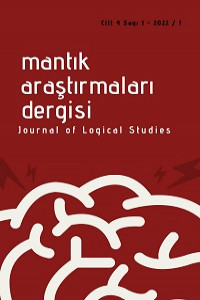Philosophical Bedrock of Farabi’s Theory of Diversity
Diversity includes three main approaches. While exclusivist approaches contend that merely one religion is true, pluralistic views hold that all religions are as good as each other. The third approaches, namely, inclusivist ones claim that although just one religion is absolutely true, other religions to some extent enjoy value.
Farabi’s theory of religious diversity contains aspects of exclusivist approaches without depriving of the advantages of inclusivist theories. Naming it relativity vis-à-vis rationality, I am trying to sort of account for Farabi’s theory of religious diversity.
For him, people come to grasp rational truths and knowledge mostly through the use of their imagination. Furthermore, the arousal of people’s feelings and emotions often originates in their imagination via sensory images and imagery forms. However, the ultimate utopian objective is to drive the public to gain rational pleasure. Given that the public, based on their nature and general habits, in most part, are unable to perceive rational truths and knowledge, the path to rational pleasure must be represented via their imagination. So bringing rational pleasure to people's minds through their imagination, the various religions in each society should represent rational truths and knowledge through the sensory images and imagery forms familiar to that society.
Farabian theory of religious diversity shares aspects of relativity as well as rationality. For Farabi, rational truth and rational pleasure is fixed and one, having only one denotation, while its connotations, say, sensory images and imagery forms are various and sundry. That being the case, different communities can have different ways to perceive the same truth and knowledge, working toward the same goal.
Anahtar Kelimeler:
Farabi, rationality, relativity, relativism, sensory images
___
- Al-Jami, Abd al-Rahman, 1979, The Precious Pearl Al-Jami’s Al-Durrah al Fakhirah, Nicholas Heer (Translation and Notes), Albany, State University of New York Press.
- Chittick, William C., 2001, The Heart of Islamic Philosophy: The Quest for Self-Knowledge in the Teachings of Afdal Al-Din Kashani, New York, Oxford University Press.
- Geertz, Clifford, 2000, Available Light: Anthropological Reflections on Philosophical Topics, Princeton, Princeton University Press.
- Heath, Peter, 2011, “Allegory in Islamic Literatures”, The Cambridge Companion to Allegory, edited by Rita Copeland, Peter T. Struck, Cambridge, Cambridge University Press, 2nd ed. pp. 83-100.
- Hollis Martin, Steven Lukes, Rationality and Relativism, Cambridge, MIT Press, 1982:
- Ibn Sina, 2007, Kitab al-Shifa', vol. V. Qom.
- Jarvie, I. C. “Rationality and Relativism.” The British Journal of Sociology, vol. 34, no. 1, 1983, pp. 44–60. JSTOR, JSTOR, www.jstor.org/stable/590608.
- Krausz, Michael (1986) "Art and Its Mythologies: A Relativist View". In: Margolis J., Krausz M., Burian R.M. (eds.) Rationality, Relativism and the Human Sciences. Studies of the Greater Philadelphia Philosophy Consortium, vol. 1. Springer, Dordrecht, pp. 189-208.
- Kreisel, Howard, 2009, “From Esotericism to Science: The account of the chariot in maimonidean philosophy till the End of the Thirteenth Century”, In James T. Robinson (ed.), The Cultures of Maimonideanism: New Approaches to the History of Jewish Thought, pp. 21-56.
- Lewis, Clive Staples, 1990, "Sense", Studies in Words (2nd ed.), Cambridge University Press.
- Marcotte, Roxanna, 2012, “Suhrawardi”, Stanford Encyclopedia of Philosophy, Stanford.
- Margolis, Joseph, Krausz, A.S., Burian, R. (Eds.), Rationality, Relativism and the Human Sciences, Springer, Dordrecht , 1986.
- McCleese, Jacob, 6/12/2015, Utopian Literature: Alluringly Gnarled Reality, http://coursesite.uhcl.edu/HSH/Whitec/LITR/5439utopia/models/finals/f2013/f13E2McCleese.htm.
- Merriam-Webster, 1991, The Merriam-Webster new book of word histories.
- Muñoz B. (1986) "On Relativity, Relativism, and Social Theory". In: Margolis J., Krausz M., Burian R.M. (eds.) Rationality, Relativism and the Human Sciences. Studies of the Greater Philadelphia Philosophy Consortium, vol. 1. Springer, Dordrecht, pp. 209-222
- Nasr, Seyyed Hossein, 1993, An Introduction to Islamic Cosmological Doctrines, New York.
- Nielsen, Kai, “Rationality and Relativism”, Philosophy of the Social Sciences, vol. 4, Issue 4, pp. 313 - 331 First Published December 1, 1974, https://doi.org/10.1177/004839317400400309
- Reichert, Michelle, 2014, Between Courtly Literature and Al-Andaluz: Oriental Symbolism and Influences, Routledge.
- Simon, Lawrence H.. “Rationality and cultural relativism”, 1998, doi:10.4324/9780415249126-R024-1. Routledge Encyclopedia of Philosophy, Taylor and Francis, https://www.rep.routledge.com/articles/thematic/rationality-and-cultural-relativism/v-1.
- Simpson, J.A. and E.S.C. Weiner (eds.), 1989, Oxford English Dictionary, 2nd ed., Clarendon Press, Oxford.
- Suhrawardi, Shahāb al-Dīn Yahya, 1999, The Philosophical Allegories and Mystical Treatises, Edited and Translated by W. M. Thackston, Mazda Publishers, Costa Mesa, California.
- Suhrawardi, 2012, Majmū’a-i Musannafāt-i Shaykh-i Ishrāq, vol. 3, Tehran: Pajūhishgāh-i ‘Ulūm-i Insānī Wa Mutāli’āt-i Farhangī Press. Tyson, Neil DeGrasse, 18/4/2012, Space as Culture, 28th National Space Symposium, Colorado.
- Walbridge, John, 2011, “The Devotional and Occult Works of Suhrawardi the Illuminationist”, Ishraq: Islamic Philosophy Yearbook, No. 2, Moscow, pp. 80-97.
- ISSN: 2687-3125
- Yayın Aralığı: Yılda 2 Sayı
- Başlangıç: 2019
- Yayıncı: Ahmet KAYACIK
